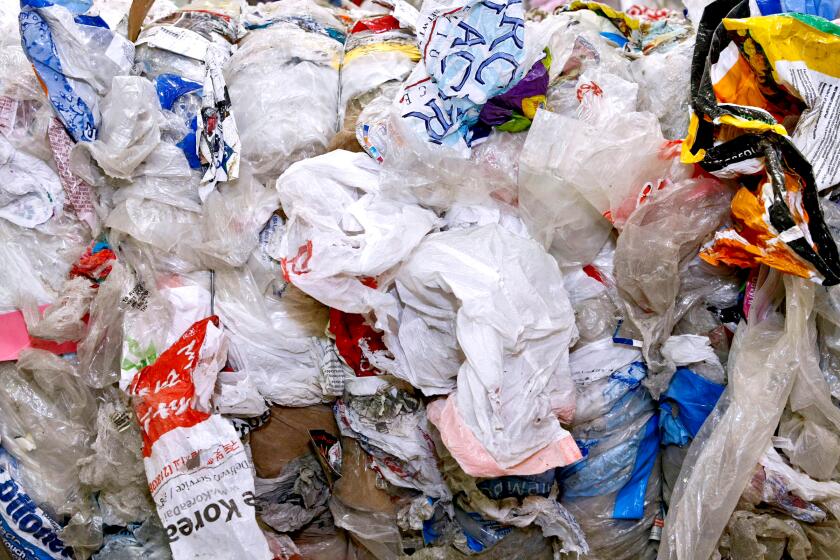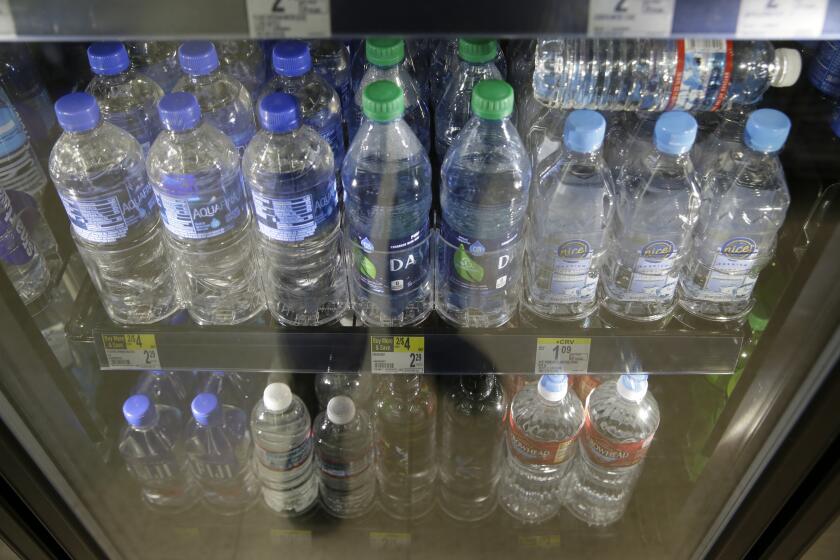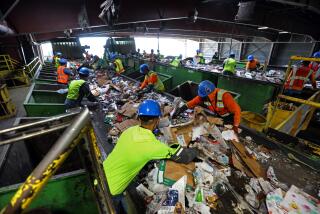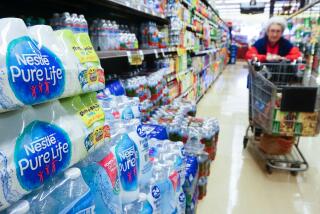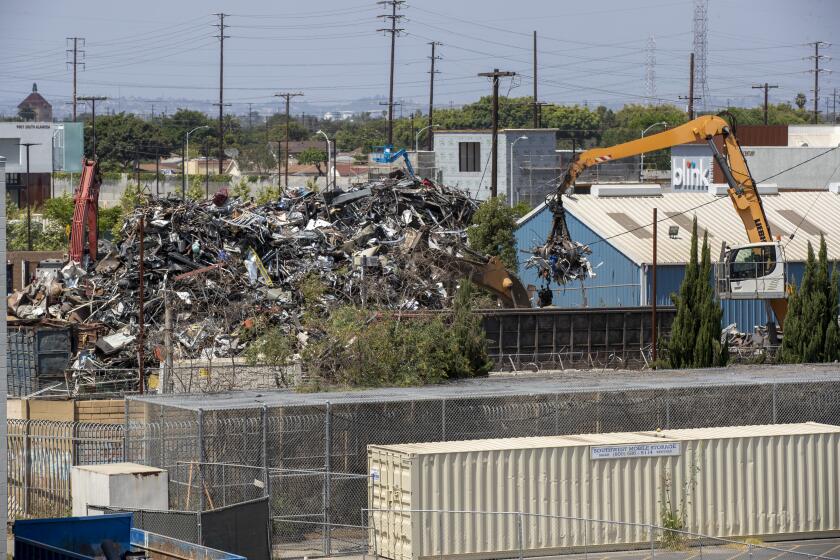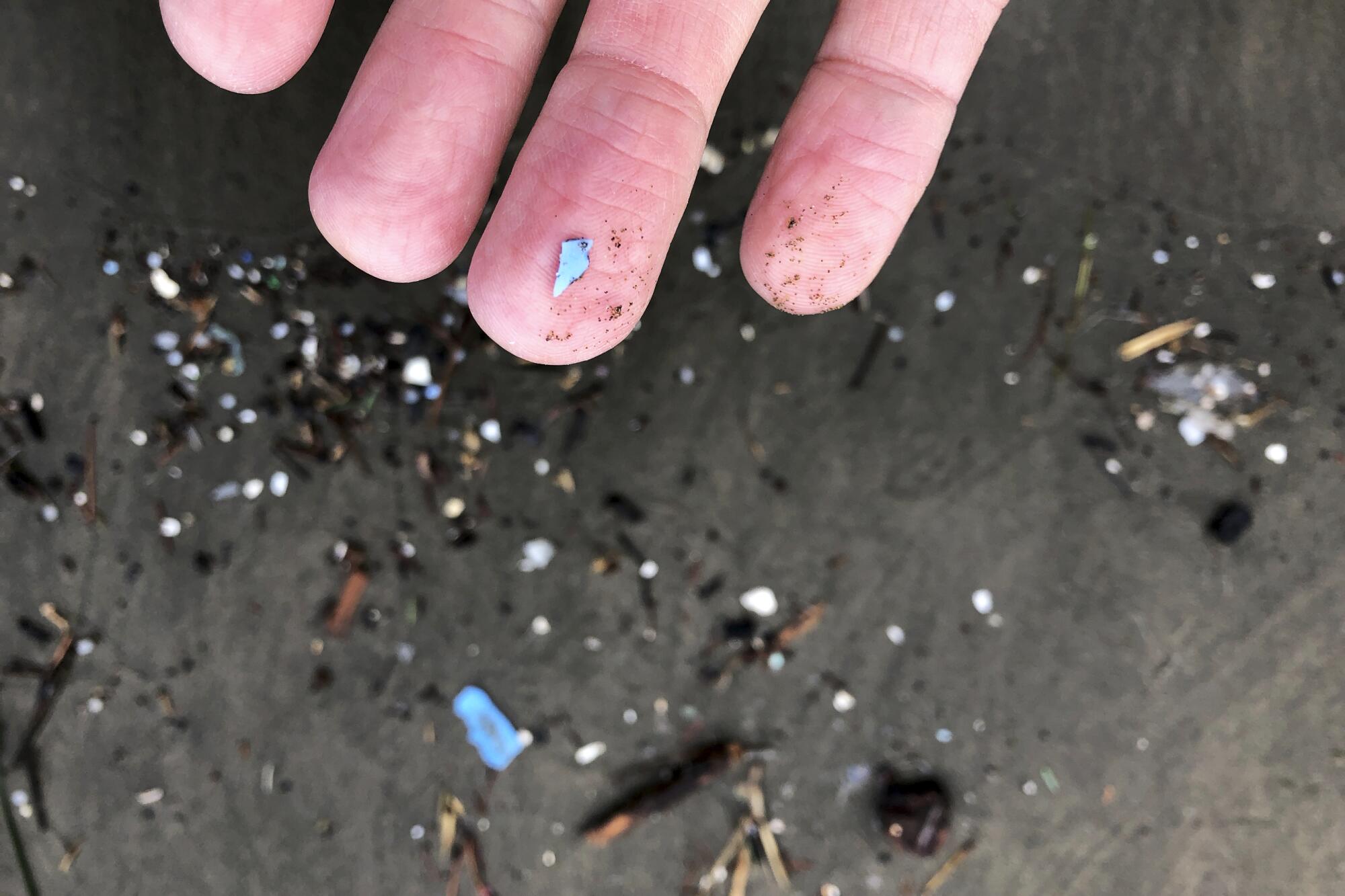
Add one more likely culprit to the long list of known cardiovascular risk factors including red meat, butter, smoking and stress: microplastics.
In a study released Wednesday in the New England Journal of Medicine, an international team of physicians and researchers showed that surgical patients who had a build-up of micro and nanoplastics in their arterial plaque had a 2.1 times greater risk of nonfatal heart attack, nonfatal stroke or death from any cause in the three years post surgery than those who did not.
It’s the first study to show these ubiquitous and pernicious fossil fuel-based particles are having a direct effect on human health, said study co-author, Antonio Ceriello, head of the diabetes department at IRCCS MultiMedica, a research hospital in Milan.
And it should serve as a caution to all people, governments and corporations that plastic is not just a nuisance and blight in the environment, but is also harming human health, he said.
Ten years after California passed landmark legislation to reduce plastic bag use, the tonnage of discarded bags has skyrocketed. What happened?
As government officials, negotiators, environmental activists and corporate representatives get ready to gather next month in Ottawa to discuss a global ban on plastic pollution, many are hoping this study will help tip the scales to establish real and tangible regulations.
“This is a beginning ... whereby people are going to see plastic is not just harmful to whales or sea turtles. It’s not just litter on a beach in some faraway country. It’s in them and it has the potential to cause harm. I think it’s going to change the narrative,” said Dr. Philip Landrigan, director of the Program for Global Public Health and the Common Good at Boston College.
He compared the awareness of the plastic crisis to climate change — in which people understood it in an abstract, theoretical way until wildfires burned their homes, sustained heatwaves killed their crops and flooding destroyed their communities.
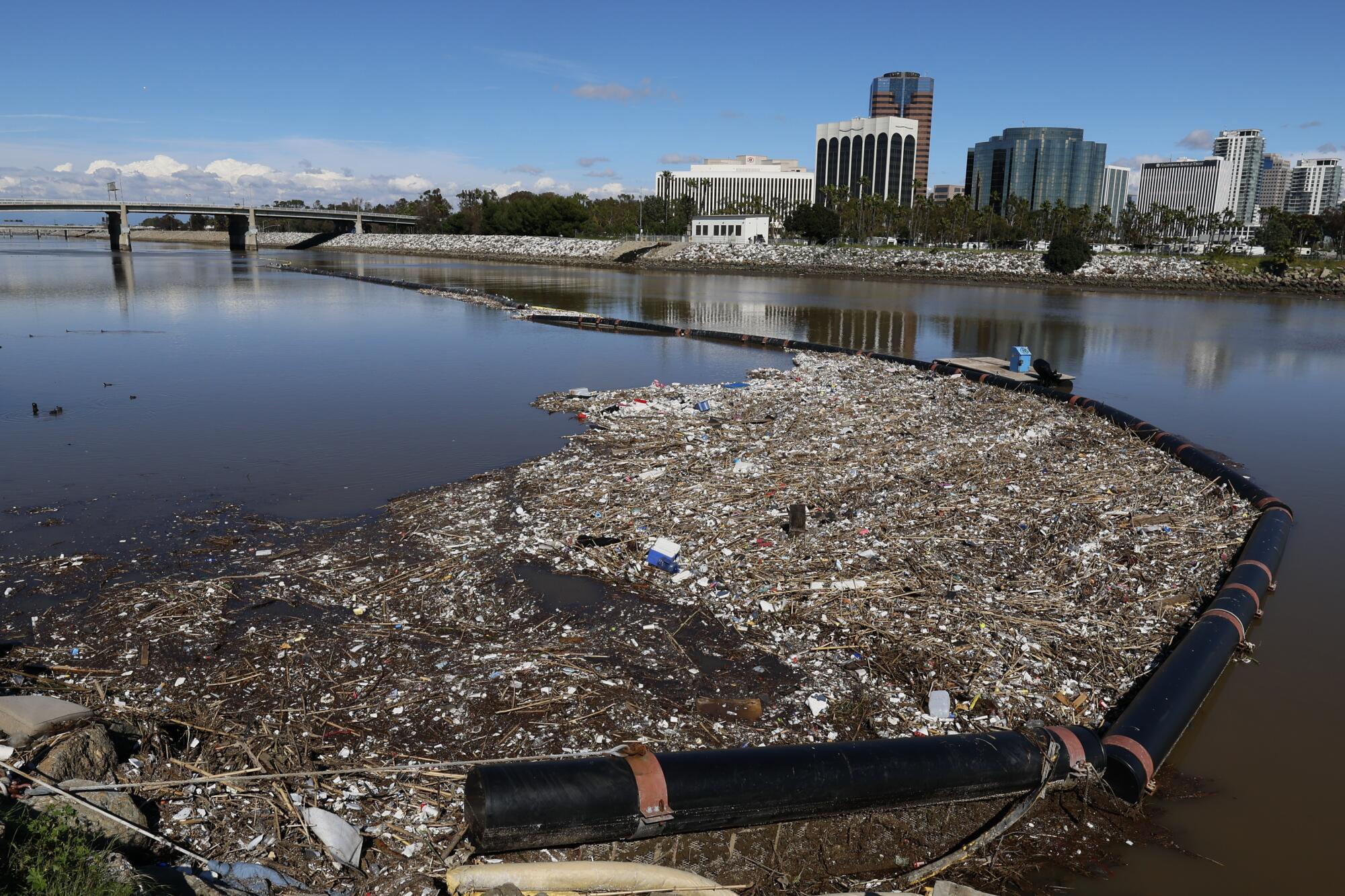
“To my knowledge, this is the first report to link microplastics with human disease,” said Landrigan, who was not involved in the study but wrote an accompanying essay urging the global community to deliver on a “mandatory global cap on plastic production.”
Matt Seaholm, president and chief executive of the Plastics Industry Assn., suggested more research needs to be done.
“We encourage lawmakers to evaluate where those particles come from before using any type of microplastics or nanoplastics arguments for the justification or passage of any laws, because every study has shown that they are not coming from packaging or single-use items,” he said.
Studies have shown that the two biggest contributors of microplastics in the environment are car tires and synthetic clothing. However, as the plastic industry expands and the number of single-use plastic items grow, so, too does their contribution to environmental contamination and pollution. Around 151 million tons of single-use plastics were produced
from fossil fuels in 2021. That number is expected to rise another 19 million tons by 2027.
The research on arterial plaque was conducted by a team of 40 scientists — including surgeons, engineers, statisticians and pathologists — from more than a dozen institutions, including Harvard Medical School, Brigham and Women’s Hospital in Boston and Case Western Reserve School of Medicine in Cleveland.
Nanoplastics are microscopic flecks so small that they can be absorbed into human cells and tissue, as well as cross the blood-brain barrier.
The 257 patients who completed the study all had asymptomatic extracranial high-grade internal carotid artery stenosis — in other words, their carotid arteries were blocked with plaque. The patients underwent carotid endarterectomies, a procedure in which the artery is opened and the plaque is cleaned out. Patients who’d had previous heart failure, valvular defects, cancer or other causes of hypertension were disqualified.
The researchers then examined the plaque and found polyethylene micro- and nano- particles in 150 of the patients. Thirty patients had polyvinyl chloride particles in their plaque. Images from electron microscopy showed visible, jagged-edged “foreign bodies” along with the biological plaque in these patients.
Polythylene, or PET, is the plastic used to make soda and water bottles. Polyvinyl chloride, or PVC, is the plastic used in water pipes, packaging, medical devices, toothbrushes, children’s toys and window frames, to name a few.
The two patient populations were roughly the same in terms of age, sex, weight, smoking status, geographical location, blood pressure and heart rate.
The one glaring difference, the authors noted, was the two groups’ susceptibility to heart disease in the months following the surgery — an indication that the presence of microplastics may have played a role. Indeed, indicators of inflammation were higher in the plastic-exposed group. Nonfatal heart attack, nonfatal stroke, or death from any cause occurred in eight of the 107 patients who did not have microplastics in their plaque and 30 of the 150 patients with microplastics.
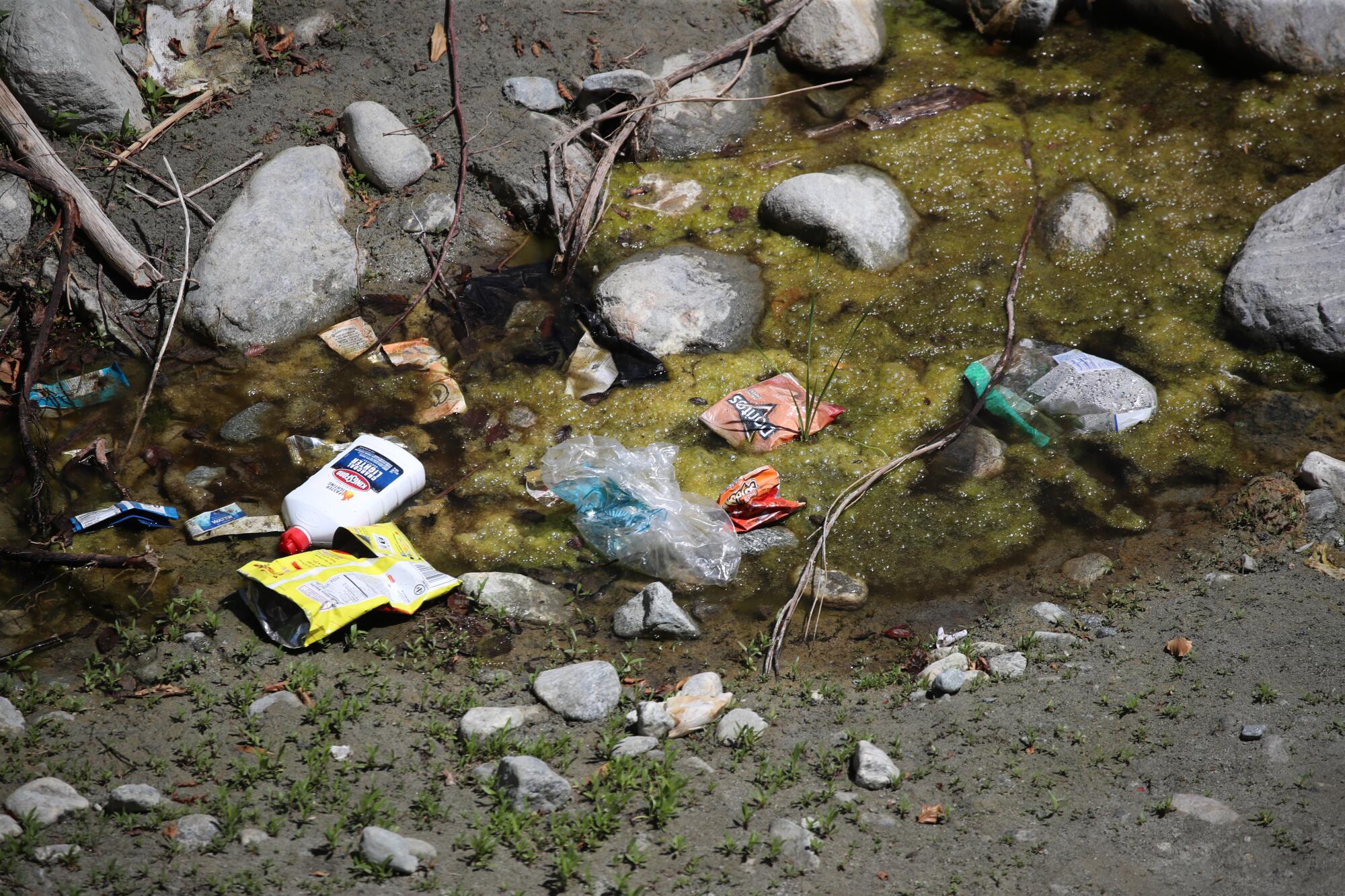
The authors stressed they could only show correlation, not causality. Additional research would be necessary to establish a clear connection.
Study co-author Leonardo Trasande, a pediatrician and public policy expert at New York University’s Grossman School of Medicine and Wagner School of Public Service, said it was equally possible that chemicals piggy-backing on the particles — such as bisphenol A, phthalates and/or other plasticizers and additives — could be the culprits. The paper also notes that lab contamination and patient behaviors that are unknown to the researchers could also influence their results.
“I can’t tell you it’s the microplastics and I can’t tell you it’s the chemicals. I couldn’t tell you because no study has measured both and they both coexist,” he said. “The fact is that plastics are horrible for human health and costly.”
He noted a recent study he authored that showed the disease burden of these chemicals costs the U.S. healthcare system roughly $250 billion a year.
Ceriello and his co-authors noted scores of animal studies that showed harmful effects of microplastics. He also said the authors were still unclear as to how patients were being exposed, whether through inhalation or ingestion.
California winds spread microplastics from natural fertilizers at higher concentrations than previously known, a team of UCLA researchers has found.
Recent studies have found micro- and nanoplastics in water bottled in plastic, as well as in dust.
“This is very solid and should be taken very seriously at the highest level of government,” said Judith Enck, the director of Beyond Plastics and a former regional director at the U.S. Environmental Protection Agency. “This tracks with other studies that have found microplastics in various organs, human blood, placenta and breast milk so this is not all that surprising, but still stunning.”
Plastic has been found everywhere scientists have looked: From the deepest ocean trenches to the highest alpine peaks. Petroleum-based plastics do not biodegrade. Over time, they break down into smaller and smaller pieces — known as microplastics, microfibers and nanoplastics — and have been found in household dust, drinking water and human tissue and blood.
“Cardiologists need to inform their patients to avoid plastic packaging — which is very hard to do,” Enck said.
Tracey Woodruff, director of UC San Francisco’s Program on Reproductive Health and the Environment in the Department of Obstetrics, Gynecology and Reproductive Sciences, said physicians and clinicians need to begin talking to their patients about the harms of plastic. She authored an essay that looked at the harmful effects of endocrine disruptors in the same edition as the heart study.
She said advice from doctors to eat organic, unprocessed foods already reduces exposures to plastics. But more is needed, especially in the medical fields of reproduction, obstetrics and pediatrics, she said, where the evidence of harm from plastic chemicals and endocrine disruptors has been well established.
The mounting evidence, she said, is getting “hard to ignore.”
